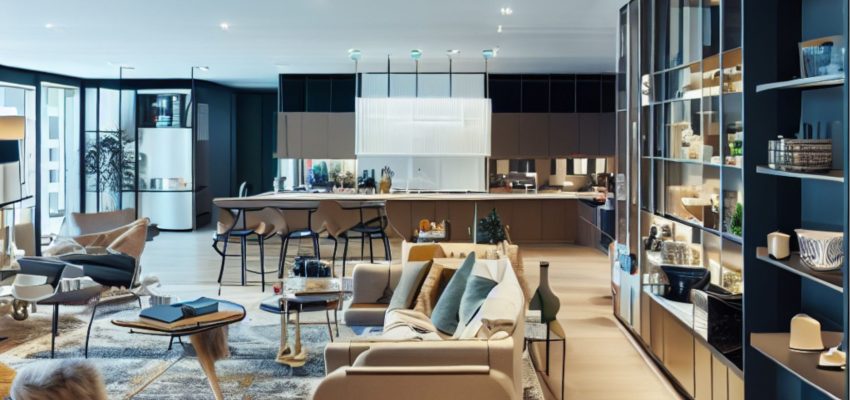
Modern Home Plans: A Guide to Making the Most of Your Space
Ever dreamed of designing your own modern home? You’re in the right place! We’ll guide you through understanding modern home plans, exploring the latest designs, and creating an efficient floor plan that’s perfect for your lifestyle.
Don’t worry, you’re not alone in this journey; we’re here to help you turn your dream home into reality.
Dive in, let’s make the most of your space together.
Understanding House Plans
You’ve got to know your house plans inside out, they’re the roadmap to your dream home. A well-designed plan can save you money, prevent construction mishaps, and ensure your house meets your needs.
Plus, it’s your chance to incorporate the latest design and construction trends, making your home both functional and stylish.
What is a House Plan?
In the world of architecture, a house plan is essentially a blueprint that details the design of a home, where every element has its specific place. A well-designed plan saves you money, reduces waste, and ensures that your home fits your lifestyle perfectly. It’s all about the details – from the flow of the interior spaces to energy-efficient design techniques.
You’re not just buying a dwelling; you’re investing in a space that’ll become an integral part of your life. You’ll understand how rooms relate to each other, how the house will sit on the lot, and where the sun will shine in at different times of day.
Importance of a Well-Designed House Plan
By choosing a well-designed house plan, you’re laying the foundation for a home that’ll meet all your needs and desires. It’s crucial to understand the impact of a house plan on the overall look, feel, and function of your home.
With a well-thought-out plan, you’re not just building a house, you’re creating a home that mirrors your lifestyle, preferences, and aspirations. So, invest time in selecting or designing the right plan – it’s a decision you won’t regret.
Read also – Modern Home Builders: Your Guide to Finding the Perfect Custom Home
Key Features of Modern House Designs

In modern house designs, you’ll often find open floor plans, large windows, and minimalist aesthetic as key features. These elements not only provide a sleek, contemporary look but also offer practical benefits.
- Open floor plans: They make your home feel spacious and inviting. They enhance the flow of energy and improve communication within the house.
- Large windows: They allow natural light to flood your home, creating a warm and vibrant atmosphere. Plus, they’re energy-efficient, helping you save on electricity bills.
- Minimalist aesthetic: It simplifies your space and reduces clutter, promoting a sense of peace and tranquility. Moreover, it’s cost-effective as you’ll need fewer pieces of furniture and decor.
Embrace these features to create a home that’s not just trendy but also comfortable and cost-efficient.
Benefits of Choosing a Modern House Design
Surprisingly, when you choose a modern house design, you’ll not only enjoy a sophisticated aesthetic appeal, but also reap practical benefits like cost efficiency and enhanced functionality. You’ll feel part of a community that values the blend of simplicity, elegance, and sustainability.
The table below summarises the key benefits of modern house designs:
| Benefit | Description | Impact on You |
| Aesthetic Appeal | Sleek, clean lines and a minimalist aesthetic | Enhances the visual appeal of your home |
| Cost Efficiency | Use of energy-efficient materials and designs | Saves you money on energy bills |
| Enhanced Functionality | Open floor plans and maximized utilization of space | Provides you with a comfortable, spacious living environment |
Embrace modern design trends. They’ll not only make your home look chic but also make your living easier and cost-effective.
Choosing the Right Modern Home Style
Your home’s style should reflect your personal taste while embracing the benefits of modern design. Here’s a quick list to help you select the right modern style without breaking the bank:
Minimalist Design

It’s all about simplicity and functionality. This style eliminates unnecessary details, saving you money on materials and labor.
Industrial Style

It’s cost-efficient as it leaves structural elements exposed. You’ll save on wall finishes and gain an edgy, urban vibe.
Scandinavian Style

It merges beauty with practicality. The focus is on natural materials, light, and open spaces. You’ll gain a cozy, welcoming environment without overspending.
Designing an Efficient Floor Plan
When designing your floor plan, consider factors such as space utilization and energy efficiency.
You’ll find that a well-thought-out design can maximize your living space without inflating your energy bills.
Stay tuned for tips on how to incorporate these elements into your modern home design.
Factors to Consider when Designing a Floor Plan
In designing a floor plan, you’ll need to consider factors like room sizes, traffic flow, and furniture placement. It’s not just about aesthetics, but functionality and comfort.
Here are three key points to keep in mind:
- Room Proportions: Ensure you’ve got the right balance. Oversized rooms can feel empty, while cramped spaces can feel claustrophobic.
- Traffic Flow: Plan your layout to allow easy movement. This means considering doorways, corridors, and the space between furniture.
- Furniture Placement: Think about where you’ll put your furniture. This will affect both traffic flow and room proportions.
Read also – How to Choose the Perfect New Home Floor Plans in 2023
Maximizing Space in a Modern Home Plans
By implementing smart design choices, you can maximize space in your modern home without sacrificing style or comfort. It’s about being innovative and strategic with your layout and furnishings. Here’s a table to guide you:
| Design Choice | Benefit |
| Open Plan Layout | Creates a sense of spaciousness |
| Multi-Functional Furniture | Saves space by serving multiple purposes |
| Vertical Storage | Utilizes height, freeing up floor area |
| Light Colors | Gives the illusion of a larger room |
| Mirrors | Reflects light and enhances room depth |
Integrating Energy Efficiency into Your Floor Plan
You’ve maximized space, and now it’s time to integrate energy efficiency into your floor plan. Every kilowatt saved not only reduces your bills but also benefits the environment. Here’s a simple, 3-step guide to get you started:
- Open Design: Opt for designs that encourage natural light and ventilation, reducing reliance on artificial means.
- Insulation: Choose top-notch insulation to minimize energy loss through walls, floors, and roofs.
- Smart Systems: Install energy-efficient appliances and systems, like solar panels or smart thermostats, to further manage energy use.
Remember, incorporating these elements isn’t just a trend, it’s a lifestyle choice. It’s about creating a home that’s not only comfortable and stylish, but also responsible and sustainable.
You’re not just building a house, you’re joining a community.
Creating Your Dream Home

Creating your dream home doesn’t have to be a daunting task. By collaborating with an architect or designer, you can customize your modern home plan to suit your personal style and needs.
It’s essential to keep abreast of the latest design trends to ensure your home remains contemporary and stylish.
Working with an Architect or Designer
When you’re working with an architect or designer, it’s crucial to remember that they’re not just drawing up a plan, they’re helping you visualize and build your dream home from the ground up. They’re your partners, offering expertise in transforming your vision into reality.
Communication is key: Convey your ideas and concerns openly. They’re there to listen and adapt to your needs.
Utilize their knowledge: They’re up-to-date with the latest trends, materials, and cost-saving strategies. Let them guide you.
Trust the process: Good design takes time. Be patient and trust their expertise.
Read also – New Home Construction: Hiring an Architect or Interior Designer
Customizing Your Modern Home Plan

In your journey to customize your modern home plan, it’s essential to incorporate your personal style, but don’t forget to consider functionality as well. You’re not just building a house; you’re creating a haven where you belong.
It’s crucial to strike a balance between aesthetics and practicality. Consider open floor plans. They’re trendy, cost-efficient, and foster a sense of community. Use multi-purpose furniture to maximize space and ensure every square foot serves a purpose. Also, don’t shy away from technology. Smart home features not only add value but also enhance your lifestyle.
Keeping Up with Trends in Modern Home Design
You’ve got to keep an eye on the dozens of evolving trends in modern home design to ensure your space stays contemporary and stylish. It’s all about making the most of your space, keeping in line with your budget, while still reflecting your personal taste.
Frequently Asked Questions
What Are Some Affordable Modern Home Plans for a Small Budget?
You’re on a budget, aren’t you? Consider open floor plans, modular homes, or tiny house designs. They’re trendy, cost-effective, and make clever use of space, creating a cozy, inclusive feel without breaking the bank.
How Can I Incorporate Sustainable Design Elements Into a Modern Home Plan?
You can incorporate sustainable design by choosing energy-efficient appliances, using recycled or sustainable materials for construction, and implementing solar power. It’s about creating a home that’s modern, affordable, and kind to the environment.
What Are the Potential Challenges of Constructing a Modern Home?
Building a modern home presents challenges like higher costs due to specialized materials, finding skilled labor, and dealing with zoning restrictions. But remember, overcoming these provides a unique, sustainable, and contemporary living space.
How Long Does It Generally Take to Build a Modern Home From a Plan?
Depending on the complexity of your chosen design, it generally takes around six to twelve months to build a modern home from a plan. However, factors like weather and permits can affect the timeline.
Can Modern Home Plans Be Modified to Accommodate People With Special Needs or Disabilities?
Absolutely! Like a master tailor altering a suit, architects can modify modern home plans to meet special needs. Ramps, widened doors, accessible bathrooms—you can craft a space that’s both stylish and accommodating.
